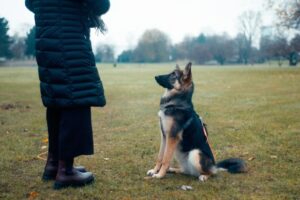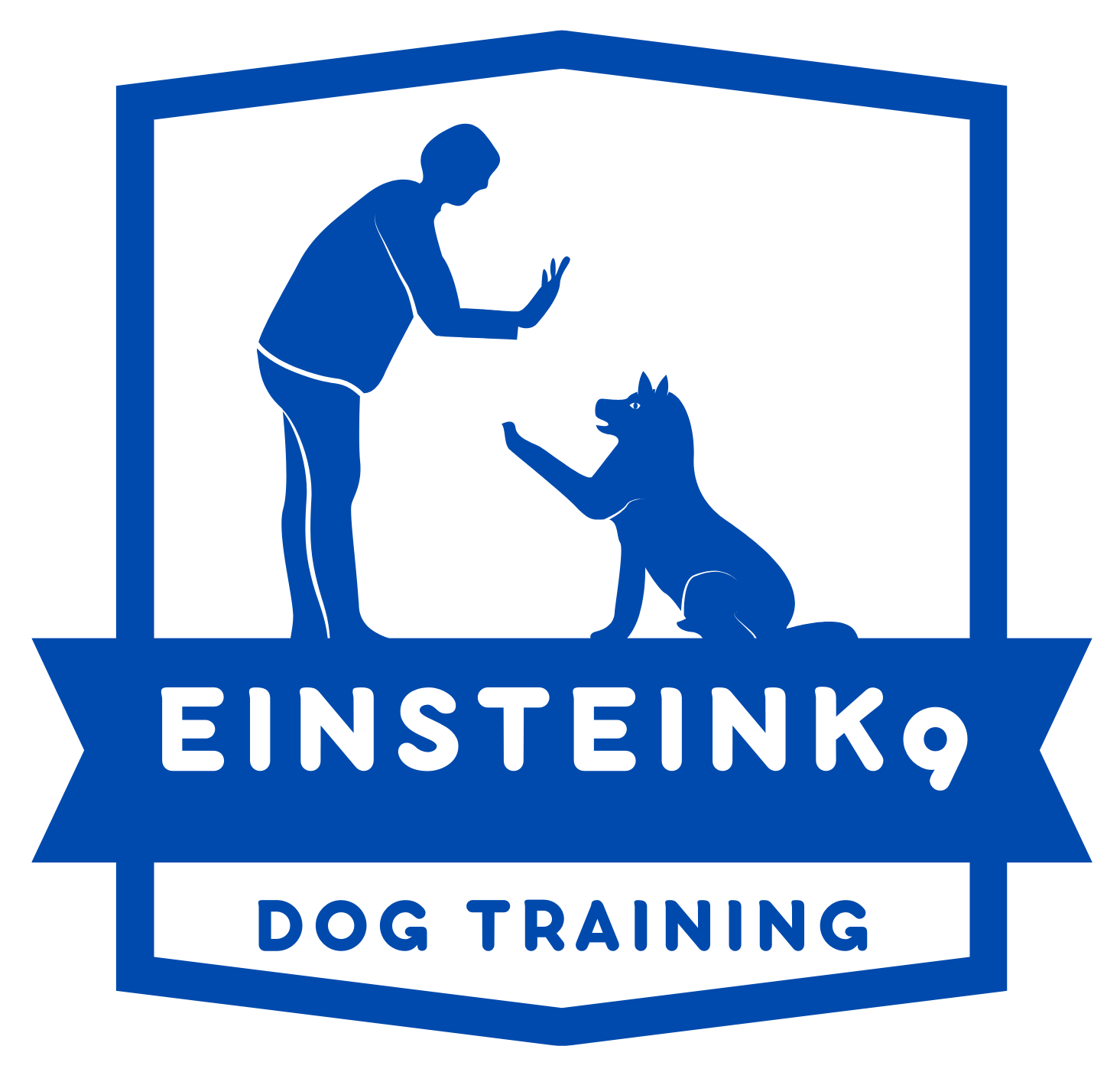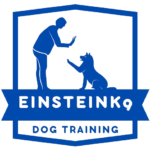Welcome to the EinsteinK9 Dog Training blog. We are a Brooklyn-based dog training company passionate about and dedicated to creating harmony between you and your dog.
I will give you “the Clift Notes” before I go into further detail: The most essential and fundamental point and practice that I would like to communicate is that in dog training, embracing the LIMA method (least intrusive, minimally aggressive) coupled with positive reinforcement techniques, provides a robust foundation for cultivating a well-mannered and happy canine companion. This approach reinforces good behavior and strengthens your bond with your furry friend. Below, we delve into several positive reinforcement commands essential for the basic dog obedience.
What is Positive Reinforcement?
Positive reinforcement is a training technique that encourages desired behaviors by offering rewards or incentives. Reward types can range from verbal praise to treats, toys, or affection. The key to positive reinforcement is timing—the reward must be given immediately after the desired behavior to impact the dog’s future actions.
Unlike old-school dog training, which focuses on punishing undesirable behavior, positive reinforcement focuses on rewarding and praising good behavior. It involves using treats, toys, praise, and affection to motivate your dog to repeat the desired action. Positive reinforcement helps establish trust and builds confidence in your dog, making it a powerful tool for obedience training.
Basic Commands
Gaining Your Dog’s Attention: The First Step in Training
Before diving into specific commands, it’s imperative to ensure your dog is attentive and ready to learn. A dog’s attention is the cornerstone of effective communication and training.
How to Achieve This:
- Call your dog’s name in a clear, upbeat tone.
- When they look at you, immediately mark the behavior with a cheerful “Yes!” and follow with a rewarding treat (there are other words, are a “clicker” that you can use for a marker. We suggest “yes” because it is so simple and natural).
- Practice this consistently to reinforce that responding to their name is always a positive experience.
Mastering this initial step lays the groundwork for a successful training session, making it easier to teach further commands.
The “Sit” Command: A Foundation of Good Manners
The “sit” command is one of the most fundamental and versatile commands every dog should know. It is easy to teach and helps manage impulsive behavior, such as jumping on people or begging for food. It is invaluable for instilling patience and discipline in your dog, from waiting at street crossings to greeting people politely.

Training Steps:
- Hold a treat close to your dog’s nose to capture their interest.
- Gently lift the treat above their head, causing their gaze to follow, and their rear slowly move the treat up and over their head, causing them to sit down naturally.
- As soon as they are in motion toward the sitting position, say, “Sit.”
- As soon as they sit, enthusiastically say “Yes!” and reward them with the treat.
- Incorporate the verbal command “sit” as you perform the gesture, refining your dog’s response through repetition.
The “Come” Command: Ensuring Safety and Control
A reliable recall command is crucial for preventing potentially dangerous situations and ensuring your dog’s safety.
Effective Training Techniques:
- Stand a short distance from your dog and hold out a treat.
- In an encouraging tone, say, “Come!” and reward them as they approach you.
- Consistently practice this command to enhance your dog’s responsiveness, especially in distracting environments.
- This guide provides you with the basics; each of these commands, especially “come,” requires several repetitions without distractions, adding distractions, then adding distance without distractions, followed by distance with distractions, etc.
The “Down” Command: Promoting Relaxation and Respect

Teaching your dog to lie down on command fosters calmness in various settings, whether at home or in public.
- Start with your dog standing or sitting (I prefer starting from the sit position initially because it is easier), holding a treat to pique their curiosity.
- Slowly move the treat towards the ground, encouraging them to follow until they are entirely lying down.
- Because it is more difficult to guide a dog in a down position and because we want to have proper timing between the actual command and the behavior, I teach down by instructing with the treat first (which becomes the hand signal). Then, I add the command once the dog consistently performs the behavior.
- Mark the moment with a positive affirmation like “Yes!” and reward them, gradually associating the action with the command “down.”
The “No” Command: Preventing Unwanted Behaviors
The “no” command is pivotal for redirecting your dog from inappropriate actions or potential hazards.
Implementation Steps:
- Place a tempting item on the ground and wait for your dog to show interest.
- As they approach or take the item, firmly say “No!” and show them a more enticing treat.
- Once they obey and leave the item, praise them warmly and offer the treat as a reward.
The “Stay” Command: Cultivating Patience and Discipline
“Stay” is a fundamental command for instilling discipline, enhancing safety, and managing situations more effectively.
 Training Guide:
Training Guide:
- Command your dog to “Sit.”
- Gradually increase the distance between you, using a firm “No!” if they attempt to follow.
- Upon compliance, say “Stay,” reward their obedience, and slowly expand the exercise’s duration and distance.
- We begin by learning the “Stay” command from a sit position. You can apply the “Stay” command to the down position once your dog knows the “Stay” command.
The “Heel” Command: Ensuring Pleasant Walks
Training your dog to heel makes walks more enjoyable and controlled, particularly in crowded or distracting settings.
Teaching Method:
- With your dog at your left side and a treat in hand, command them to “sit” to focus their attention.
- Begin walking, using the treat to guide their pace and direction. Say “Heel” firmly if they drift too far away.
- Gradually decrease the use of treats as they learn to walk calmly at your side.
The “Come” Command: Building Trust and Safety
The “come” command is vital for calling your dog back to you in emergencies or when they are off-leash.
Training Tips:
- Begin with your dog on a leash and in front of you.
- Command “come” while gently tugging the leash towards you, rewarding their response with praise or a treat.
- Repeat this exercise off-leash in safe, enclosed areas, gradually extending the distance until they reliably come when called.
Reward their correct positioning with treats and praise, restarting the exercise if they wander.
You will cultivate a well-trained and obedient dog by consistently implementing these commands, resulting in a more harmonious relationship and safer interactions with your furry friend. Always use positive reinforcement and patience when training your dog, as it is the key to success. Happy training! So, those are the basic commands that can help you start training your dog. However, there are many other commands that you can teach your dog, such as “stay,” “roll over,” and “shake.” The possibilities are endless! Remember to keep training sessions short and fun for you and your dog. Always be consistent with commands and rewards to ensure effective learning. You can turn any pup into a well-behaved, trained companion with patience, dedication, and love.
In implementing these positive reinforcement commands, remember to phase out treat rewards gradually, replacing them with verbal praise or physical affection. For dogs less motivated by food, discover alternative rewards that motivate them, such as toys or quality time. Encouragingly, the principles of positive reinforcement and the LIMA method significantly contribute to a harmonious and respectful relationship with your pet, laying the foundation for advanced training and lifelong obedience.
Further Training Tips and Considerations
- Consistency is key: Use the same commands, tone, and rewards to avoid confusion or mixed signals.
- Practice regularly: Short but frequent training sessions are more effective than lengthy but irregular ones.
- Be patient and positive: Dogs respond better to positive reinforcement and encouragement than punishment or frustration.
- Seek professional help if needed: If you’re struggling to train your dog, don’t hesitate to seek guidance from an experienced trainer. They can offer personalized advice and support for specific training challenges.
Conclusion
Training your dog is an ongoing process that requires patience, consistency, and positive reinforcement. With the proper techniques and mindset, you can effectively teach your dog essential commands such as “sit,” “stay,” “down,” “come,” and “heel” for a happier and more well-behaved pet. Remember always to be patient and seek professional help if needed. Happy training! Keep practicing and enjoy the bonding experience with your dog!
Additional Resources
Interested in learning more about dog training? Check out these resources for further reading and guidance:
The Association of Professional Dog Trainers
American Kennel Club Training Resources

